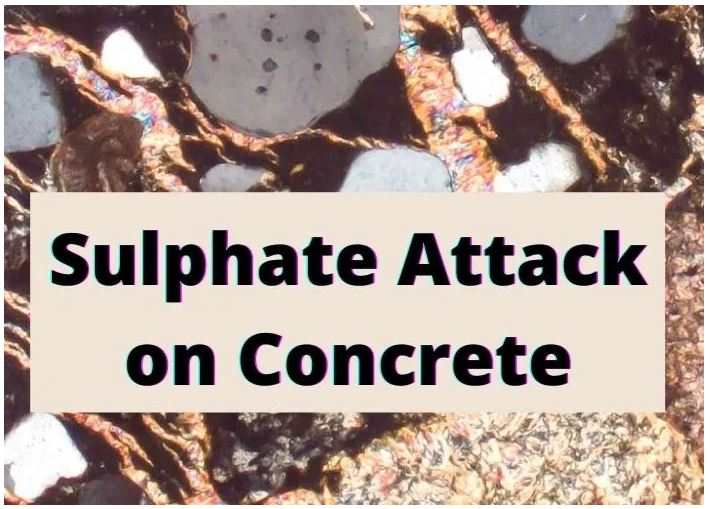Feasibility Study of an Innovative Sulphate Resistance Test – Sulfate Attack (2016)
Sulfate Attack Attack Dissertation – In today’s world, concrete structures are deteriorated from various types of decay where the concrete has weakened or failed. One major type of decay of concrete is sulfate attack. Sulfate attack is especially unpredictable on the grounds that the source of sulfates can be external or internal (postponed ettringite development), and the trouble can be chemical in nature, from the variation of the hydration or the change in the concretes physical nature, because of stage changes in the entering sulfate solution.
In spite of the fact that sulfate attack has been perceived as a reason for concrete deterioration for a long time, it remains a disputable and complex point. In this report, external sulfate attack is looked at in particular since a high concentration of sulfate solution is used to immerse mortar bars and cubes. The test method used in the following project covers the determination of length change of mortar bars and cubes immersed in a sulfate solution.
Mortar bars and cubes made using mortar described in Test Method C109/C109M are cured until they achieve a compressive strength of 20.0 ± 1.0 MPa [3000 ± 150 psi], before the specimens are immersed. This test method provides a means of assessing the sulfate resistance of mortars made using Portland cement, blends of Portland cement with pozzolans or slags, and blended hydraulic cements (C1012M-15, 2015).
However, Ordinary Portland Cement (OPC) has been used in this project. The standard exposure solution used in this test method contains 352 moles of Sodium Sulfate (Na2 SO4 ) per m3 (50 g/L). According to Test Method C109/C109M, the mix design proportion used is 1 part cement to 2.75 parts of sand by mass (1:2.75, Cement:Sand) and a water-cement ratio by mass of 0.46 (1:0.46, Water:Cement). The first experiment consisted of 21 cubes and 6 bars specimens that have been produced from the mix design followed in Test Method C109/C109M. All the specimens were cured and stored in limewater for 28 days and two mortar cubes are tested to acquire a compressive strength of 20.5 MPa. After acquiring the desired compressive strength, the remaining specimens are immersed in sulfate solution for the test to begin.
The length change of each specimen is measured at time intervals of 1, 2, 3, 4, and 8 weeks. The second experiment involved a steel ring test where the same procedure is followed as the first experiment with the same mix design proportion followed according to Test Method C109/C109M. Mortar is casted around the steel ring to yield a mortar ring where 6 strain gauges are installed to measure the strain and expansion of the steel ring. The mortar will expand due to the presence of sulfate solution in the middle of the hollow circle of the mold. Expansion is measured at a similar time interval as the first experiment at 1, 2, 3, 4, and 8 weeks.
- 12,000 words – 56 pages in length
- Excellent use of literature
- Excellent analysis of subject area
- Well written throughout
- Ideal for construction and civil engineering students
1 – Introduction
Sulfate Attack
Outline
2 – Literature Review
Calcium Sulfate
Sodium Sulfate
Magnesium Sulfate
Preventing Sulfate Attack
Permeability
Sulfate Resistant Cements
Sulfate Reaction In Cement
Expansive Volume Strain of Concrete
Expansion and Microcracking
Test Methods of Sulfate Attack
ASTM Methods
CSA A3004-C8 Test
Constant pH Test
Cyclic Wetting and Drying Test
Notched Beam Test
MNS Method
Strength Degradation Test
Diffusivity
Diffusion Equations
Compressive Strength
Issues with Standard Test Methods
Conclusion
3 – Health and Safety
4 – Experimental Program for Verification
Mix Designs
Mortar mix calculation for Bars
Mortar mix calculation for Cubes
Mortar mix calculation for Ring
Pre-test Preparation for Experiment 1
Procedure of Experiment 1
Molding and Initial Curing of Specimens
Measurements of Length Change
Details of Measurement of Bars for Length Change
Mortar Bars and Cubes Length Reading
Interval Length Change Reading and Solution Renewal
Examination of Specimens Post-Measuring Length Change
Procedure of Experiment 2
Measurements of Length Change
Sodium Sulfate Solution Required
Sodium Sulfate Solution Required for Mortar Bars
Sodium Sulfate Solution Required for Mortar Cubes
Sodium Sulfate Solution Required for Mortar Ring
Absorption calculation
5 – Results and Discussion
Experiment 1 Length Change (Mortar Cubes & Bars)
Experiment 2 Expansion (Mortar Ring)
Volumetric Strain Relation to Expansion
Discussion
6 – Conclusion
References
Appendix Section

